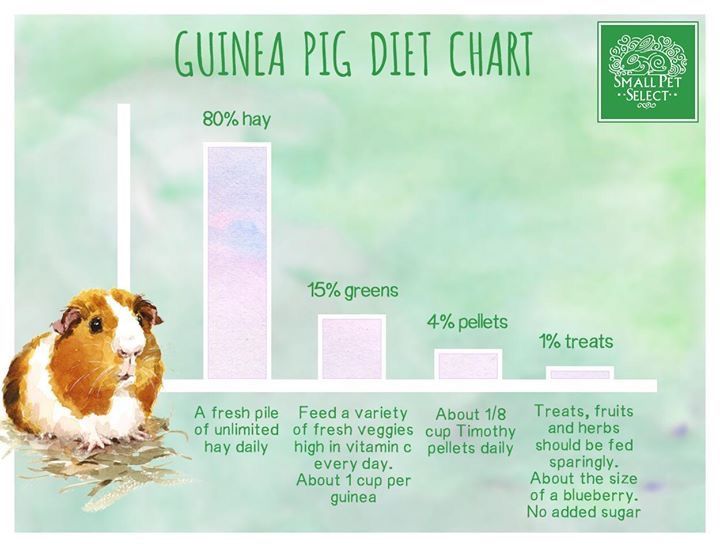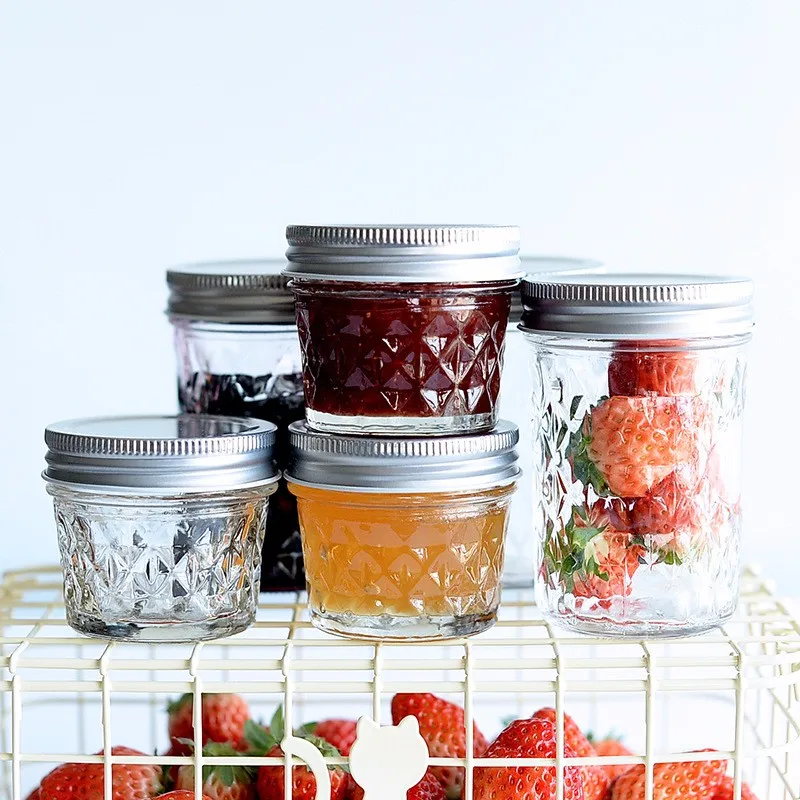What to feed baby guinea pig
How & When to Do It
25/10/2020
Hand-raising baby guinea pigs can be quite tricky and demanding. This responsibility should never be taken on lightly, and some points should be considered before deciding to hand-raise guinea pigs.
Most importantly, you need to be 100% confident that the mother guinea pig isn’t feeding her babies. Unless the mother guinea pig is known to be dead, there is a good chance that she is in fact feeding her babies. In general, mother guinea pigs do not constantly tend to their babies the way we might think.
Guinea pig mothers feed their babies only a few times per day and then leave them alone to their own devices. Guinea pigs are born being able to walk, see and hear, and most of them will start nibbling on solids within a few days, as well as drink milk from their mum.
Signs That Baby Guinea Pigs Have Been Neglected From Their Mother
If you think the mother guinea pig is “ignoring” her litter, have a look at the condition of the babies. If the baby’s tummies are round and full-looking, they are active and bright, warm and chatting away, making little noises, then the mother guinea pig is likely feeding them.
If the babies are cold, lethargic or have shrunken bellies, then you may have to intervene. It is a good idea to weigh the babies daily to make sure they are growing and gaining weight appropriately.
Handling Baby Guinea Pigs
Before handling the babies, wash your hands well. This not only helps to remove bacteria but also eliminates any smells from other objects or animals that can stress the babies. Once they’re clean, rub your hands in some clean, fresh hay and on the mother guinea pig’s fur to scent your hands.
Assisted Feeding
Before starting any syringe or bottle-feeding, it is worth trying to assist the babies with natural feeding.
If the mother guinea pig will tolerate it and isn’t too stressed, you can try to gently, but firmly hold the mother guinea pig in your arms and gently try to put each baby onto one of her nipples to self-feed. Sometimes it is helpful for the babies if a small amount of milk is expressed from the nipple to entice the baby to suckle. If you still don’t have any luck, then you may need to start to assist feeding or hand-raising.
Sometimes it is helpful for the babies if a small amount of milk is expressed from the nipple to entice the baby to suckle. If you still don’t have any luck, then you may need to start to assist feeding or hand-raising.
What Formula Should I Feed Baby Guinea Pigs?
We recommended the Wombaroo Guinea Pig Milk. It is a premium product that contains vitamin C (which is very important for young guinea pigs). It comes as a powder which can be mixed with warm water to make the milk for the babies. All the mixing instructions are on the box.
Wombaroo Guinea Pig Milk can be purchased from The Unusual Pet Vets. Alternatively, some other veterinary clinics and larger pet shops may also stock it.
Do I Need Additional Feeding Supplies?
In addition to the feeding formula, you will also need some small plastic syringes for feeding the milk to the babies. These can be purchased from our clinics or most pharmacies. You can also buy small plastic feeding bottles and plastic teats from large pet shops, but you will need to buy the smallest teat possible, as usually the puppy and kitten ones are generally too big. Most baby guinea pigs will feed from a syringe without a problem.
Most baby guinea pigs will feed from a syringe without a problem.
We recommend having a small scale to weigh the baby guinea pigs and for daily weight monitoring. The amount of milk to feed is dependent on the baby’s weight.
On the Wombaroo Guinea Pig Milk box, there is a weight chart and the number of mls of milk to be fed over 24 hours. Depending on how much the baby guinea pig will take in one feeding session will depend on how frequently you have the feed them.
Feeding Procedure
Step 1
Make sure all your syringes and bottles have been thoroughly washed before use.
Step 2
Baby guinea pigs are wiggly and unpredictable. They jump suddenly and unexpectedly. A drop of only one or two feet can be fatal, so make sure they are being fed and kept in a safe environment.
Step 3
Hold the baby in its normal sitting position in one hand, and the bottle/syringe in the other. Otherwise, have the baby guinea pig sitting (safely) on the floor or a table and feed with the bottle/syringe slightly vertically in front.
Step 4
Babies often resist feeding at first, and you must overcome the temptation to force-feed. If the baby doesn’t accept the teat or syringe, then wet the baby’s lips with a drop of warm formula so it licks it off. Once it has swallowed that, repeat the procedure over and over. Be persistent and gentle. The baby will soon learn about feeding time and will generally learn to take the formula willingly despite not doing this on the first feeding.
Step 5
Do not be too forceful and squeeze too much formula into the baby guinea pig’s mouth. They can inhale milk quite easily, so drip the formula slowly for the baby to lick up.
Step 6
If the baby grabs the teat and begins suckling, allow him to do so without adding any pressure yourself. The baby should be able to suckle with enough strength to empty the bottle or syringe without any help from you. If you provide extra force, the baby may accidentally aspirate formula that’s coming in too fast.
Step 7
If the babies do not suckle, it’s not a significant problem. Most will learn to lap or sip from the tip of the teat, and this is safer, in reducing the risk of aspiration. Try to hold the teat or syringe tip sideways or down-pointed, relative to the mouth, to further reduce the risk of aspiration.
Most will learn to lap or sip from the tip of the teat, and this is safer, in reducing the risk of aspiration. Try to hold the teat or syringe tip sideways or down-pointed, relative to the mouth, to further reduce the risk of aspiration.
Do Baby Guinea Pigs Need to Be Kept Warm?
It is best to keep the babies in a warm, quiet place and in a small box or carry cage. For heating, two or more babies usually snuggle to keep each other warm. However, if there’s only one baby, a warm water bottle or heat pack wrapped in a soft towel can provide an excellent heat source but be sure the guinea pig can crawl away from the heat if it gets too warm.
A Tip on Toileting
Many newborn mammals cannot urinate or defecate on their own. Most baby guinea pigs will require the stimulation of the mother’s grooming tongue on their bellies and genital region to release a stream of urine and faeces.
To mimic this behaviour use a cotton ball moistened with warm water, and gently tap or rub the urogenital area until you feel the baby’s abdominal muscles tense and a stream of urine is released. Getting a urination response may take 15-20 seconds of stimulation, or even more.
Getting a urination response may take 15-20 seconds of stimulation, or even more.
When Are Baby Guinea Pigs Weaned?
A mother guinea pig generally feeds her babies for about 3-4 weeks, gradually decreasing the frequency of feedings until they lose interest. Your baby guinea pigs will start to nibble solid food from only a few days old. You can start introducing them to timothy and oaten hay, pellets, as well as small amounts of green vegetables and water in a shallow dish from when they are born, but this does not mean they are ready to be weaned. Once they start to eat solid foods it is even more critical that you continue the feeding formula to help control the growth of potentially harmful pathogens as the babies introduce new bacteria into their systems.
If the babies still beg for nursing by the age of 5 – 6 weeks, you can begin to dilute the formula with clean drinking water. Start with 25% water to 75% formula, and gradually decrease the percentage of milk until the babies lose interest.
Should the Male and Female Baby Guinea Pigs Be Separated?
Male and female baby guinea pigs should be separated from each other at 3-4 weeks of age to prevent any early pregnancies. Guinea pigs can then be sterilised from 16 weeks.
At What Age Can Baby Guinea Pigs Be Re-homed?
Baby guinea pigs can then be rehomed to new families by eight weeks of age, as long as fully weaned and eating solids well on their own. It is a good idea to have the babies examined by a guinea pig vet prior to sending them off to their new forever home.
For more information on hand-raising baby guinea pigs, contact your local Unusual Pet Vets team.
Testimonials
Informative Service
Very nice and informative service. Lovely vet practice, will definitely recommend to others.
Joanne Marsden
Wonderful and Knowledgeable
Wonderful and knowledgable vet. Took time to thoroughly check over my rabbit and answer all the questions I had. Would recommend to other rabbit owners.
Would recommend to other rabbit owners.
Leona Hazel
Caring and Compassionate
Highly recommend, caring and compassionate no matter how small your pet. Thank you to the unusual pet vets for treating our very sick little mouse Moon, she came back to full health and is now enjoying life in a new home with new cage mates.
Kali and Co
Simply The Best
Cannot speak highly enough of the caring and lovely staff at UPV Osborne Park. Particularly to Dr Kelly for the wonderful treatment and compassion she displayed caring for my much loved
Bugz. Definitely recommend this practice. Simply the Best.
Stephen Waddell
A Great Vet For Exotic Pets
It’s a great vet for exotic pets, we would like to thank Dr Kiara and the nurses for all the help they have done for the bunnies especially when they have been unwell.
Gretel – Thankyou for all the tips and advice on what and what not to do with the bunnies.
We will definitely be recommending to all our exotic animal friends.
Jayde Darton
5 Stars All The Way!
Fantastic vets! Staff are so helpful and friendly. Vet’s are brilliant, they show so much love and compassion to our animals. 5 stars all the way!!
Nayre Manookain
A Huge Thank you
I just want to say a huge THANK YOU to the gang at Murdoch who helped my family and stimmy Cindy. It was a very stressful time and they assisted us with ease! Pricing was also more than reasonable which we were very grateful for. Thank you guys again, my noodle is now on the mend all to you guys.
Brook Oliver
Excellent Service, Caring and Professional Advice
Excellent service, caring and professional advice, and very good handling for our pet bird, on our first visit today at The Unusual Pet Vets, Jindalee. Very helpful, and they also provided further reading for us via email after our appointment regarding a few things we asked about. All staff were lovely and friendly – from the initial phone booking (you can do internet bookings too) to and including the consult.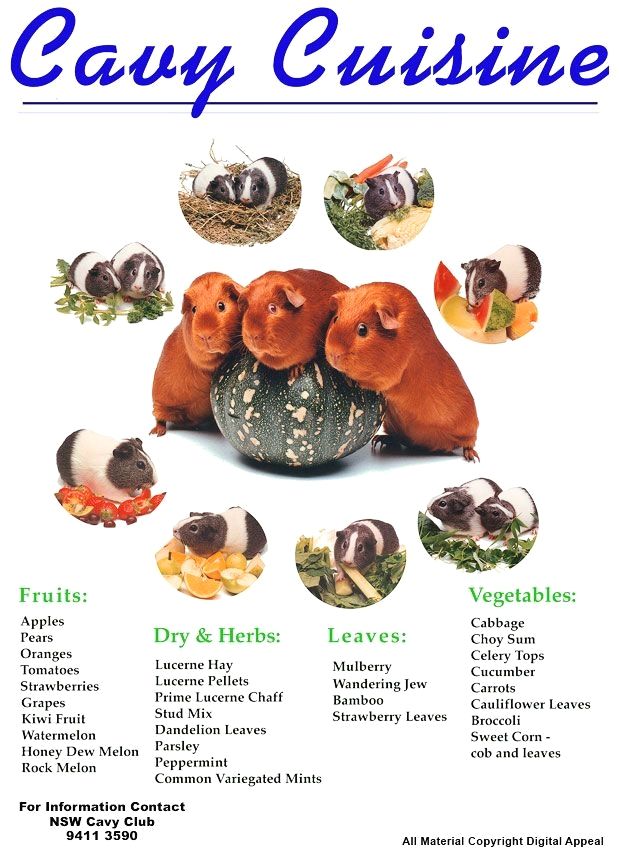 Thank you very much – we’ll definitely be back! Highly recommend.
Thank you very much – we’ll definitely be back! Highly recommend.
Lisa Hack
Received the Best Service
Received the best service from Dr Sasha at the Sunshine Coast clinic. She taught me so much in such a kind manner and was very gentle to my Guinea pig. She then followed up by emailing further information on Guinea pig general care. Highly recommend!
Kate Hunter
Amazing and Caring Staff
Amazing and caring staff at the Ferntree Gully Clinic. Our baby rat was not well, and they always made time to help and support her. Very knowledgeable and compassionate. Would highly recommend and absolutely will use again. Thank you to everyone at Ferntree Gully for being there for us and Tabby.
Vicki Freedman
See all reviews
Baby guinea pig care | The Guinea Pig Manual
If you find yourself in a situation where you would need to take care of a newborn or extremely young guinea pigs on your own, it is essential that you learn the following tips. The good news here is that guinea pigs mature relatively quickly, so you should have a “responsible”, self-reliant guinea pig in just a few days.
The good news here is that guinea pigs mature relatively quickly, so you should have a “responsible”, self-reliant guinea pig in just a few days.
However, as a general rule, in an ideal situation, newborn guinea pigs should not leave their mother’s side for at least 3 weeks.
Baby Guinea Pig Diet
The first week of life is critical. Every few hours for the first few days, you should hand-feed the baby guinea pig: mesh pellets or supplement powder, and if you have grown guinea pigs, also add a fecal pellet or two to the mix (there are good bacteria necessary for digestive health in there).
The adult guinea pig diet and the baby guinea pig diet are generally the same, with only one important exception: The Calcium. Baby guinea pigs need more of it in order to properly develop their bones. As baby guinea pigs enter the world with fully formed teeth, they are fully capable of eating solid food, so the extra calcium can be provided by the alfalfa hay and pellets.
There should also be enough Vitamin C in their diet. For more detailed info about guinea pig diet, please read our guinea pig eating page.
Proofing the Guinea Pig Cage
Is the water bottle placement appropriate for a baby guinea pig? If too high, lower it down so the pup can comfortably reach and sip from the bottle’s sipper tube.
Are the cage bars too wide apart to present a potential risk? Baby guinea pig could squeeze between bars and get stuck, or run away.
The cage should not be placed on the direct sunlight, or near intensive air flows or drafts.
The cage bedding should be cleaned more frequently – at least twice a week, or when it is obvious that it needs cleaning. A dirty cage bedding is a potential health hazard, and young piggies are even more susceptible to certain illness and diseases.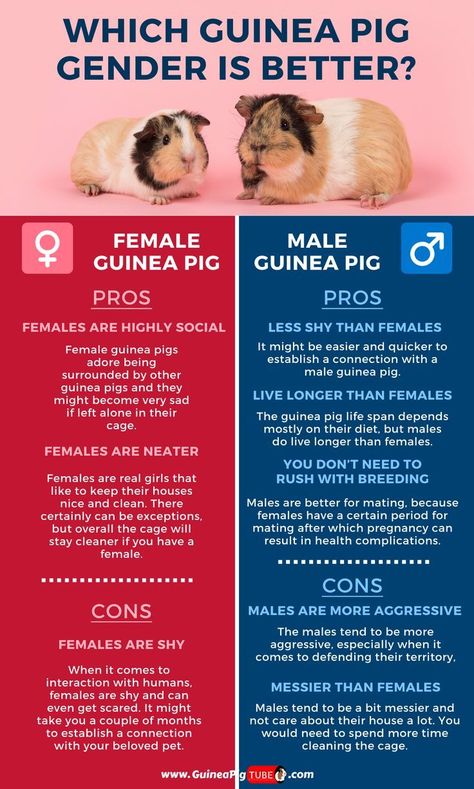
Quiet Please!
Guinea pigs can be very sensitive to loud noise, so provide a quiet environment for your baby guinea pig(s), at least for the first few weeks of their lives.
A Hiding Place
Make sure to provide your guinea pig with an additional shelter within the guinea pig cage, or a hiding place, or a hide-out spot (igloo, small wooden box, anything will do, really). This “safe house” will make them feel more safe.
Beware of The Early Maturity
Male guinea pigs become sexually active around 3 weeks of age. If you want to avoid potential new pregnancies, separate your guinea pigs by their gender before the week 4. For optimal social development, it is recommended to pair a young guinea pig with one older guinea pig that is the same gender.
Socializing
In order to become more comfortable with human interaction, you should handle your young guinea pigs fairly often.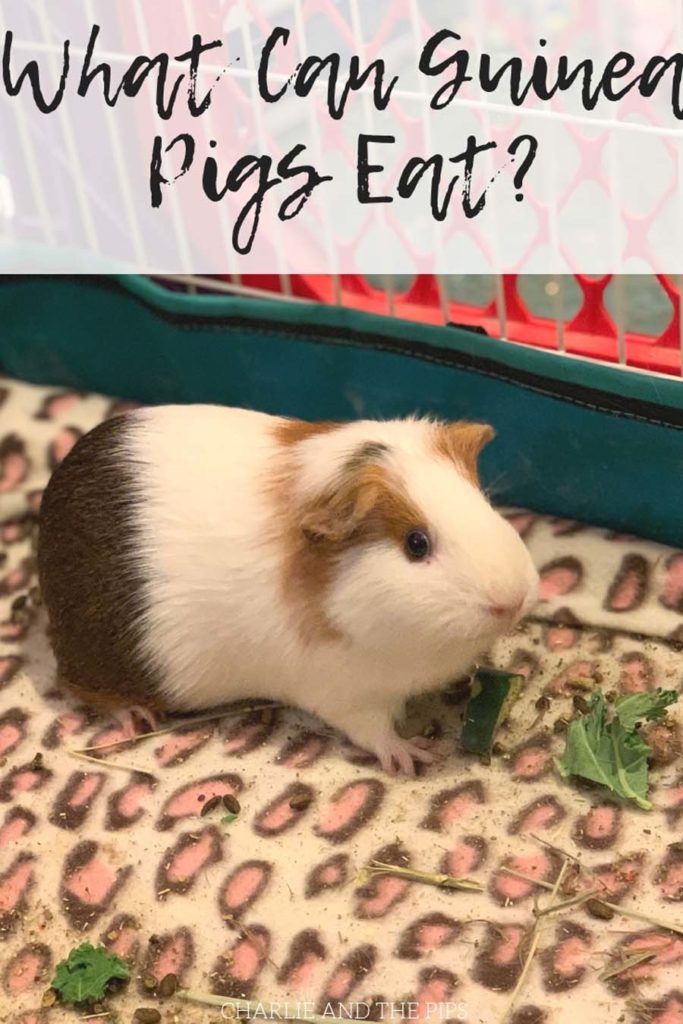 Slow and gentle movements, calm and gentle voice. However, don’t keep them away from their mother for too long (if there is a mother). Don’t try to handle a baby guinea pig when they are sleeping or nursing.
Slow and gentle movements, calm and gentle voice. However, don’t keep them away from their mother for too long (if there is a mother). Don’t try to handle a baby guinea pig when they are sleeping or nursing.
The fastest way to build trust between you and your guinea pig definitely goes through the stomach: bribe your guinea pig with food and treats.
Any thoughts or experiences? I would love to hear from you on the forum!
Feeding an orphaned guinea pig baby
Guinea pig babies have an advantage over other babies - their mothers have a fairly long gestation period and babies are born well-formed, have thick fur, teeth and can be relatively independent. Having been born and dried, they can move well and, from the first days, in addition to mother's milk, eat "adult" food.
Undoubtedly, the best thing for cubs is with their mother, with her milk they receive the antibodies necessary for health, from her examples they learn how and what to eat, using her feces, populate their intestines with beneficial microflora, during the first week the mother licks them, especially carefully in the area of \u200b\u200bthe “butt”, thus stimulating defecation and urination, babies warm themselves under their mother’s barrel, follow her in single file, learn to communicate, etc. Therefore, if the cubs are orphaned for some reason, try to find a foster mother for them. Usually, a guinea pig gives birth to one to four cubs, and a healthy mother pig, who has recently given birth to one or two babies, may well feed and leave a couple more orphans.
Therefore, if the cubs are orphaned for some reason, try to find a foster mother for them. Usually, a guinea pig gives birth to one to four cubs, and a healthy mother pig, who has recently given birth to one or two babies, may well feed and leave a couple more orphans.
Food for nursing mothers and babies should be of very good quality - selected hay with a high calcium content, without sharp inclusions, branded granules with a special mark for young animals, always fresh clean drinking water, when the cubs grow up, they are gradually accustomed to green food, vegetables and fruits (fruits are given to pigs quite a bit, as a treat).
If the cubs have lost their mother or there is a weaker baby in the multiple litter, and the nurse could not be found, you will have to take care of feeding and caring for the little guinea pigs.
First of all, you need to get a scale to adequately assess whether the babies are gaining weight well, whether the diet suits them. They should be weighed immediately after birth and monitored daily for at least a week. As a rule, during the first two days, babies lose a little weight, and from the third day they begin to gain it.
As a rule, during the first two days, babies lose a little weight, and from the third day they begin to gain it.
The next thing owners who act as foster mothers to newborn guinea pigs should know is that their pets do not need to be supplemented with any kind of milk or milk substitutes. They can only mother's milk, no other is suitable for them and is prohibited.
If you are unable to purchase a special food for hand-feeding guinea pigs, you should use hay, regular pellets, compressed hay pellets, alfalfa, high in calcium, soaked in warm water, or left overnight to soak in the refrigerator, and in the morning crushed with a spoon and heated to room temperature, or ground in a coffee grinder (ground in a mortar with a pestle) with hay, and then stirred with liquid. You can add a small amount of boiled pumpkin or baby pumpkin puree without additional sugar and cream.
At first, babies should be fed every 1-2 hours, at least every 3 hours, feeding no more than 1-2 cm³ of food at a time. After each feeding, the baby should be given some water to drink, sometimes with vitamin C or a rehydron solution.
After each feeding, the baby should be given some water to drink, sometimes with vitamin C or a rehydron solution.
Some babies learn to spoon feed and some need to be syringe fed (see Anorexia in Guinea Pigs). When feeding and drinking from a syringe, make sure that the babies do not choke, the ingress of liquid or food into the respiratory tract can cause aspiration pneumonia, which is likely to lead to the death of the animal. Therefore, act calmly and slowly, comfortably seated with the baby. Make sure your baby stays clean and dry after feeding.
For the first 1-2 weeks after each feeding, small guinea pigs should definitely stimulate digestion, defecation and urination by doing a gentle massage in the "butt" area and gently stroking the bottom of the tummy, for this you can use a slightly damp warm towel.
For seeding the intestines of babies with beneficial microflora, the feces of a healthy guinea pig are most suitable, which must be stirred with a small amount of water and added to the “feed porridge”. Cubs will benefit from communication with their dad or older siblings if they are healthy and not aggressive. If necessary, the veterinarian will prescribe special preparations for the development of beneficial flora for babies.
Cubs will benefit from communication with their dad or older siblings if they are healthy and not aggressive. If necessary, the veterinarian will prescribe special preparations for the development of beneficial flora for babies.
Babies should always have fresh hay, pellets, green leafy vegetables, grass, water in their home to encourage them to eat on their own.
If you just need to support a weaker baby from a multiple litter, it is useful to leave him alone with his mother several times a day, taking the larger babies for 15-20 minutes.
Lonely and weak cubs will need an additional source of heat. Using an incandescent lamp for heating, make sure that the baby does not overheat and can, if necessary, hide in a cool corner. And when using various heating pads, make sure that they are not chewed (especially chemical and electrical).
Additional administration of vitamin or medicinal preparations should be consulted with a veterinarian ratologist in each specific case. For weak babies, warmth, feeding and other home care are very important, but sometimes babies cannot survive without supportive or therapeutic injections.
For weak babies, warmth, feeding and other home care are very important, but sometimes babies cannot survive without supportive or therapeutic injections.
Chief Physician
of the Umka Veterinary Clinic
LATsAPNEVA
Yana Aleksandrovna
For any questions regarding the health of your pets
you can contact our clinic at:
st. Novomostitskaya, 2, tel: 067-100-34-75 from 9.00 to 21.00
prosp. Minsk, 10, tel: 098-598-57-28 from 9.00 to 21.00
from 14.00 to 15.00 Sanitary hour
Veterinary clinic "Umka"
www.umka-vet.com.ua 9000 9000
Carriage guinea pigs. How to take care of babies
L:.1 -->
We guess you didn't even know that baby guinea pigs are unique in nature. Imagine that while still in the womb, they can hear and see. The opening of the eye occurs in babies two weeks before birth. Thus, when born, these fluffy crumbs already see perfectly and hear sharply. Amazing, right? But that's not all!
The opening of the eye occurs in babies two weeks before birth. Thus, when born, these fluffy crumbs already see perfectly and hear sharply. Amazing, right? But that's not all!
The incisors of small guinea pigs are fully developed for the birth process and are ready for use. And such amazing features are inherent in nature in all pets of this species, regardless of breed.
Important things to know about newborn guinea pigs
If the babies are underweight and weigh less than 40 grams, the chances of the babies surviving are almost zero. Remember that the normal weight for newborn offspring of guinea pigs is 45-140 grams.
If there is only one baby in the litter, then most likely he will weigh more. Thus, the more children in the litter, the less chance they have of survival. After the expiration of a month from the moment of birth, it is necessary to transplant the offspring from the mother.
How to feed a baby guinea pig
For four weeks, the guinea pig takes care of her babies with all the care and attention. The nutrition of babies for the most part consists of mother's milk, which contains almost 45% fat. Such nutrition allows the offspring to develop rapidly, and after a short time, small guinea pigs are already beginning to eat solid food.
The nutrition of babies for the most part consists of mother's milk, which contains almost 45% fat. Such nutrition allows the offspring to develop rapidly, and after a short time, small guinea pigs are already beginning to eat solid food.
Rest assured, already on the second day after birth, babies begin to study the place of residence for the presence of additional food.
Another amazing fact: practically all the necessary vitamins for growth and development of newborns are found in their mother's litter. It is in it that there are vitamins K and B, so do not be embarrassed that young people eat a large amount of litter per day, but the cage will be cleaner.
Growth of guinea pigs
Watching guinea pigs grow is a pleasure, especially since this process is quite fast. Within 15 months, the babies grow up, and the cubs gain weight almost every day. Normal weight gain is about 4 grams. Within two weeks, babies become twice as large as at the time of birth.
Weak offspring
Unfortunately, no brood can be immune from weak offspring. It may happen that there will be several babies in the litter who will not have a chance to survive.
If we talk about the reasons for such a situation, these can be:
- Wrong position of babies in the mother's womb. If the fetus is at a disadvantage in relation to other babies and receives less nutrients and oxygen, it is natural that it will be born weak.
- Large litter. We have already said that the more babies the mother has, the greater the chance of the birth of non-viable individuals.
- Weakness of the female during pregnancy, as well as early childbirth. Premature babies are born with soft claws, poor hair and most often die immediately after birth.
In fairness, some weakened cubs can still be saved. If the baby is trembling slightly, but looks healthy on the outside, it must be dried and warmed, and then sent to the rest of the newborns.